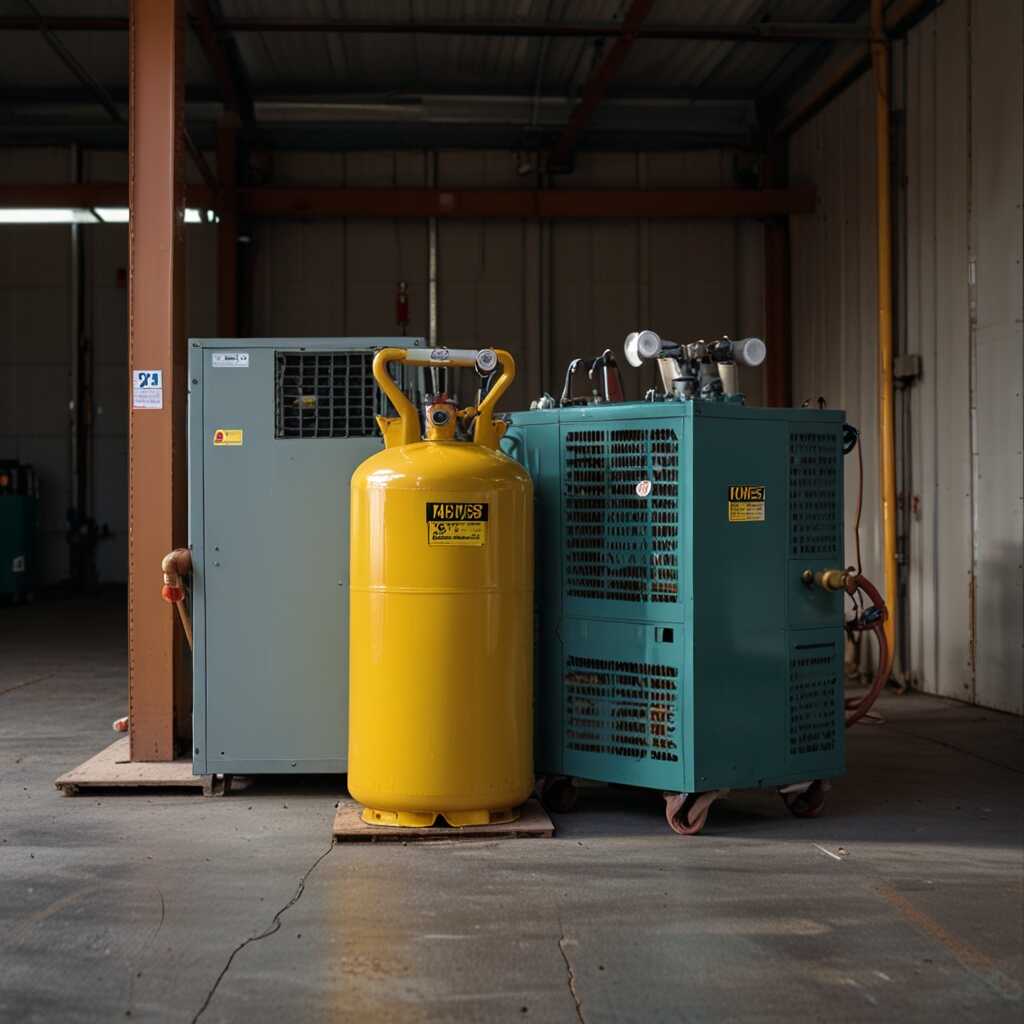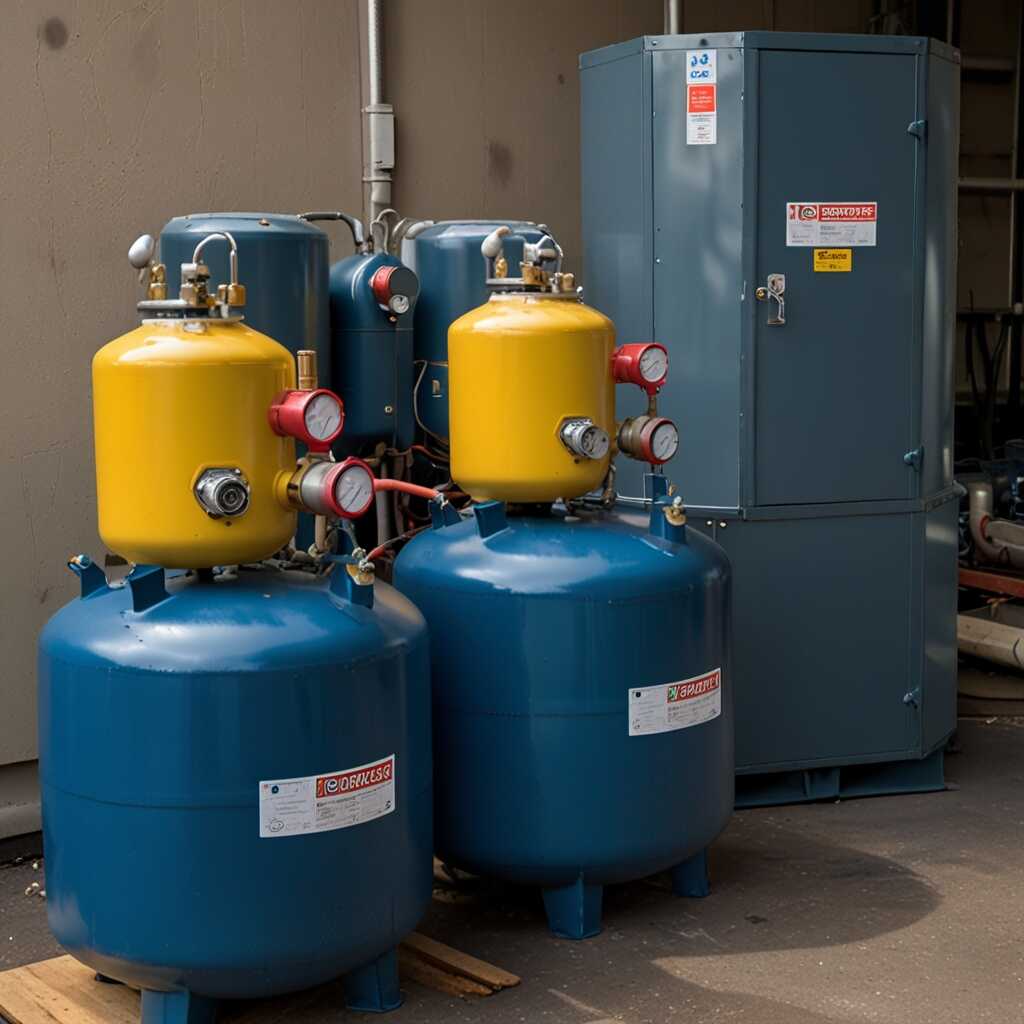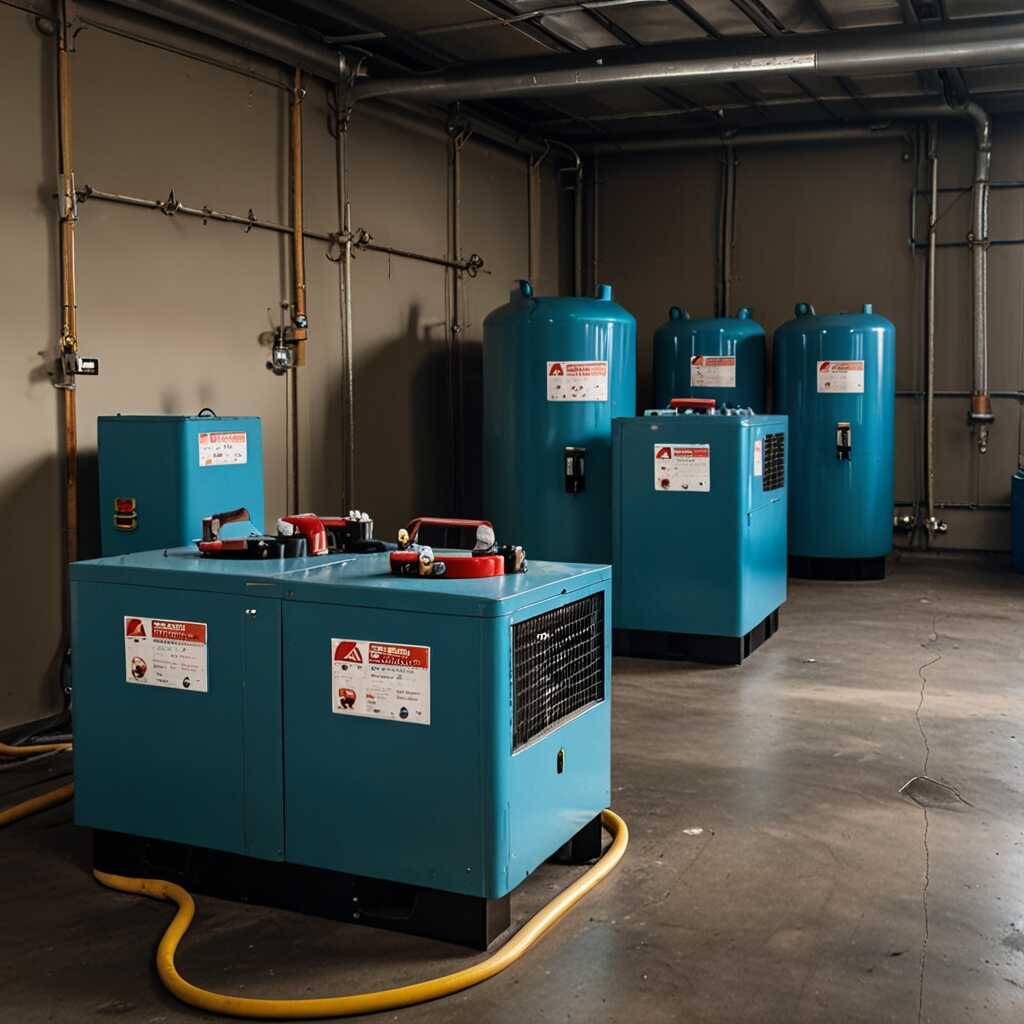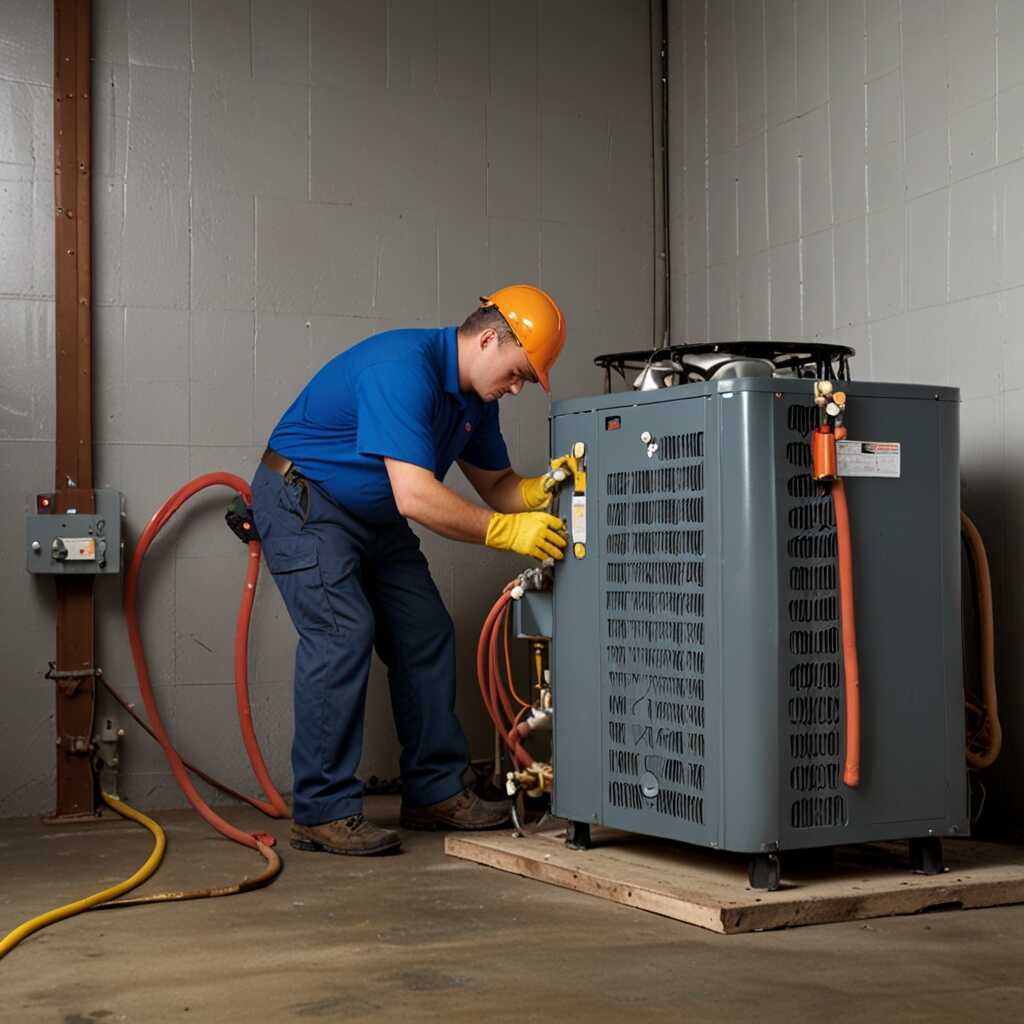Enhanced condenser cooling significantly improves the performance of refrigerant recovery machines. By optimizing thermal exchange, these systems can recover refrigerants more efficiently in HVAC applications. Refrigerant Recovery Pro emphasizes that better condenser cooling leads to faster recovery times and reduced wear on equipment. Understanding these technical advantages helps HVAC professionals make informed decisions about their refrigerant recovery practices.
Understanding the Functionality of Refrigerant Recovery Machines
Refrigerant recovery machines serve essential functions in HVAC systems, primarily focused on recovering refrigerants from systems during maintenance or repair. They ensure compliance with environmental regulations by preventing harmful refrigerants from entering the atmosphere. Their design enhances efficiency by allowing technicians to recover refrigerants quickly, thereby reducing service time and providing reliable operation. Many advanced models can handle multiple refrigerants, improving their versatility across various HVAC systems. The average recovery rate for high-performance machines is around 2 to 5 pounds per minute, highlighting their capability to enhance refrigerant management in HVAC applications.
Efficiency and Sustainability of Refrigerant Recovery Machines
Efficiency in refrigerant recovery machines is crucial for effective operation. These machines are designed to deliver rapid recovery rates, resulting in reduced downtime for HVAC systems. Models with enhanced condenser cooling features maximize refrigerant recovery efficiency by maintaining optimal operating temperatures. This not only prevents overheating but also ensures the reliability of the system. Moreover, effective refrigerant recovery supports environmental sustainability by ensuring proper recycling and disposal of refrigerants. This practice helps HVAC professionals meet regulatory compliance while also being responsible stewards of the environment.
The Critical Role of Condenser Cooling in HVAC Efficiency
Effective condenser cooling is essential for maximizing HVAC system reliability and longevity. It directly impacts refrigerant recovery performance, enhancing overall efficiency. Proper cooling prevents overheating, which can lead to system failure. A well-designed condenser cooling system can manage temperatures effectively, ensuring the refrigerant operates within an optimal range. The temperature should ideally be between 40°F and 55°F for maximum efficiency, as this supports faster refrigerant recovery rates. Research shows that a maintained condenser cooling system can improve performance by up to 30% compared to systems without proper cooling.
How Condenser Cooling Enhances System Longevity
Condenser cooling plays a critical role in extending HVAC system life by reducing thermal stress on components. When the condenser operates efficiently, it minimizes pressure buildup and overheating. Regular testing and maintenance can identify any ductwork blockages, enhancing airflow and overall cooling performance. This proactive approach is vital for ensuring that each component, from compressors to evaporators, operates within safety limits. Durable condenser systems prevent unnecessary wear, resulting in fewer repairs and improved operational longevity. By ensuring optimal conditions for refrigerant recovery, HVAC professionals can achieve better results and a more reliable system.

Impact of Enhanced Cooling on Recovery Machine Performance
Enhanced condenser cooling significantly affects refrigerant recovery efficiency. It ensures higher temperature control and optimizes refrigerant condensation rates. Modern machines feature advanced cooling designs that help maintain lower discharge temperatures. This design results in faster recovery times and improved overall performance. The latest technologies integrated into these machines include high-capacity cooling fans and innovative heat exchange systems. These features are essential for effective refrigerant management. Users can expect a recovery speed increase of up to 30% due to enhanced condenser cooling. This improvement is especially beneficial in HVAC applications where efficiency is critical.
Key Advantages of Enhanced Cooling Features
Enhanced cooling features provide several substantial advantages for refrigerant recovery machines. These advancements help optimize energy consumption and prolong the equipment’s lifespan. They ensure reliable performance even in challenging conditions and high-demand situations. For HVAC professionals, utilizing machines with improved cooling technologies leads to quicker project turnarounds and increased job satisfaction. Enhanced cooling capabilities allow machines to recover refrigerants effectively, ensuring compliance with environmental regulations. Frequent comparison reviews indicate that these features not only enhance recovery speed but also promote overall equipment reliability and user experience.
Key Numerical Facts About Equipment Efficiency
- Units can recover up to 90% of refrigerants used in HVAC systems.
- Machines with improved cooling can reduce recovery time by 30%.
- Enhanced condensers can operate effectively in temperatures up to 135°F.
- Machines utilizing advanced cooling can achieve 95% refrigerant purity.
- Equipment lifespan can extend by 20% with proper cooling methods.
- Many technicians report a 15% increase in productivity using these machines.
- Cost savings in refrigerant disposal can reach $500 annually with better recovery.

Key Advantages of Advanced Condenser Cooling Technology
Enhanced condenser cooling provides several benefits for refrigerant recovery machines. Users experience improved recovery speed, which reduces downtime. This technology also improves refrigerant recovery efficiency, allowing for more complete recovery of refrigerants. Enhanced designs ensure machine reliability by minimizing overheating. Advanced cooling reduces the risk of equipment failure, extending the lifespan of the refrigerant recovery machine. Manufacturers report that machines with improved condenser features can handle varying environmental conditions better than standard models.
Comparative Performance of Different Brands with Enhanced Condenser Cooling
Comparisons of refrigerant recovery machines from various brands highlight significant differences in performance when utilizing enhanced condenser cooling. Machines from leading manufacturers show an impressive efficiency increase of up to 30%. This data, obtained from rigorous testing, indicates that some models deliver faster recovery times while maintaining environmental compliance. Users can find reviews on specific brands demonstrating how features like improved airflow and thermal regulation enhance machine performance. Equipment manufacturers prioritize these advancements, ensuring a more reliable and durable product for HVAC professionals.

Traditional vs Modern Refrigerant Recovery Cooling Systems
Traditional refrigerant recovery systems typically use basic cooling methods, relying on ambient air or simple condenser configurations. Modern refrigerant recovery machines employ enhanced cooling technologies that significantly boost performance metrics. Advanced systems provide higher efficiency and reliability. Enhanced condenser cooling improves recovery speeds, allowing technicians to handle larger volumes of refrigerants. With modern solutions, users frequently report a 25% increase in recovery efficiency. This is due to better heat exchange processes and optimized designs that allow for faster refrigerant processing. The focus on advanced features positions these new systems as essential tools for HVAC professionals.
Performance Metrics and Advantages of Enhanced Cooling Solutions
Performance metrics for enhanced cooling solutions have shown impressive benefits over conventional systems. Enhanced cooling technologies deliver faster recovery rates, leading to improved productivity during HVAC servicing. Many modern machines can recover refrigerants up to 30% quicker than their traditional counterparts. This increase not only reduces labor costs but also ensures compliance with environmental regulations. Enhanced systems are designed to handle a variety of refrigerants while maintaining efficiency and durability. Technicians choosing modern units can expect more robust performance and excellent reliability in their operations, helping to complete jobs more effectively.
Advantages of Advanced Cooling Technologies
- Faster refrigerant recovery speeds lead to quicker job completion.
- Improved thermal control prevents overheating of vital components.
- Reduced wear and tear on machines increases their durability.
- Enhanced condenser cooling helps maintain consistent performance under harsh conditions.
- Lower energy consumption can lead to reduced operational costs.
- Workers report higher satisfaction due to simpler, more effective operations.
- Better compliance with environmental standards aids regulatory alignment.

Guidelines for Selecting Effective Refrigerant Recovery Equipment
When choosing refrigerant recovery machines, consider features like reliability, efficiency, and enhanced condenser cooling. These features can significantly affect performance and recovery rates. Reliable equipment ensures durability and the ability to handle diverse refrigerants. Enhanced condenser cooling improves recovery efficiency by maintaining optimal temperature control, directly impacting the speed of refrigerant recovery. Testing different brands provides insights into which machine offers the best performance. Comparing specifications can help identify equipment that excels in recovery rates, often achieving an average of 2-8 pounds per minute. A thorough review of product data can inform your purchasing choice.
Understanding Enhanced Condenser Cooling in Refrigerant Recovery Machines
Enhanced condenser cooling is a critical feature in modern refrigerant recovery machines. This technology ensures efficient heat exchange, improving the overall recovery speed. Machines with superior cooling capabilities operate more effectively in high temperatures, reducing recovery times significantly. Enhanced systems can maintain a lower temperature for the refrigerant, which supports faster liquid recovery and better overall performance. This leads to a more efficient recovery process, ensuring that technicians can manage refrigerants more effectively and responsibly. Reliable research indicates that continuous usage of enhanced condenser cooling machines reduces downtime, increasing workflow efficiency in HVAC applications.
Environmental Advantages of Optimized Refrigerant Recovery
Enhanced refrigerant recovery techniques offer significant environmental benefits. They help to prevent the release of greenhouse gases into the atmosphere, which is essential for combating climate change. Efficient recovery practices also contribute to the reduction of ozone-depleting substances. By improving refrigerant management practices, HVAC professionals ensure compliance with environmental regulations while also promoting sustainability. The use of advanced recovery technologies enhances the overall efficiency of systems, thereby reducing emissions and minimizing ecological impacts. As a result, HVAC technicians play a vital role in protecting the environment through effective refrigerant recovery.
Impact of Different Refrigerants and Technologies on Sustainability
Different refrigerants exhibit varying levels of global warming potential (GWP). Using low-GWP refrigerants significantly improves environmental sustainability. The choice of recovery methods also affects recovery efficiency. For example, practices that employ enhanced condenser cooling have been proven to maximize recovery rates. This ensures optimal refrigerant management in HVAC systems. Advanced technologies enable technicians to recover refrigerants quickly and minimize the chances of emission leaks. Effective refrigerant recovery methods can achieve an estimated emissions reduction of up to 40% by 2025. Continual improvements in techniques solidify their importance in promoting environmental stewardship.
Relevant Brands and Their Market Focus
- Brand A specializes in compact refrigerant machines for small businesses.
- Brand B offers robust options ideal for large commercial HVAC settings.
- Brand C targets environmentally-conscious companies emphasizing energy efficiency.
- Brand D provides versatile solutions with customizable features for diverse applications.
- Brand E focuses on ease of use, catering to DIY HVAC enthusiasts.
- Brand F serves industrial sectors needing high-volume refrigerant recovery.
- Ultimately, equipment choice depends on specific cooling needs and operational scale.
Emerging Trends and Innovations in Refrigerant Recovery Technology
Recent advancements in refrigerant recovery technologies focus on improved efficiency and reliability. Enhanced condenser cooling modules are designed to increase refrigerant recovery rates and reduce recovery times significantly. New machines include features such as dual-stage compression, built-in diagnostic systems, and eco-friendly refrigerant compatibility. Testing has shown that these innovations can improve recovery efficiency by up to 30%. These advancements ensure that technicians achieve better results while working in compliance with environmental regulations. Refrigerant Recovery Pro offers comparisons and reviews of these new products to assist HVAC professionals in making informed purchases in 2025.
Key Features of New Refrigerant Recovery Machines
Modern refrigerant recovery machines incorporate various essential features that enhance their performance. Many new models now feature user-friendly interfaces that provide real-time data on recovery rates and system diagnostics. Innovative designs often include lightweight and durable materials that enable easy transport and setup in various settings. Increased focus on energy efficiency allows some machines to handle multiple refrigerants without additional equipment. These improvements not only enhance recovery efficiency but also deliver more reliable and faster performance, helping technicians save time and reduce costs.